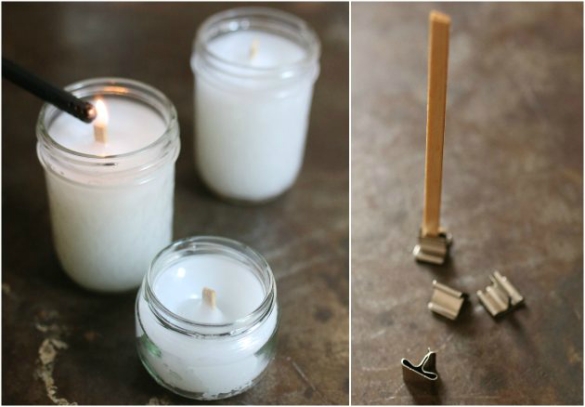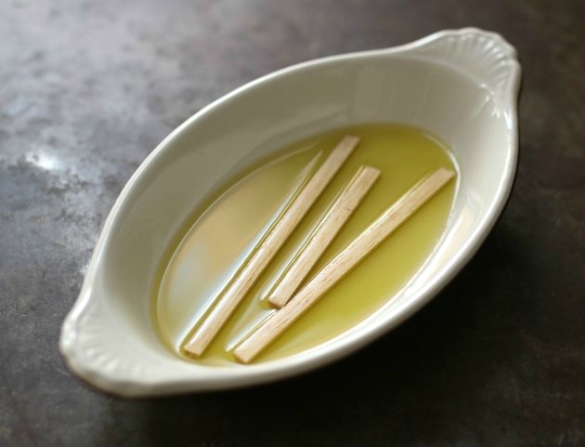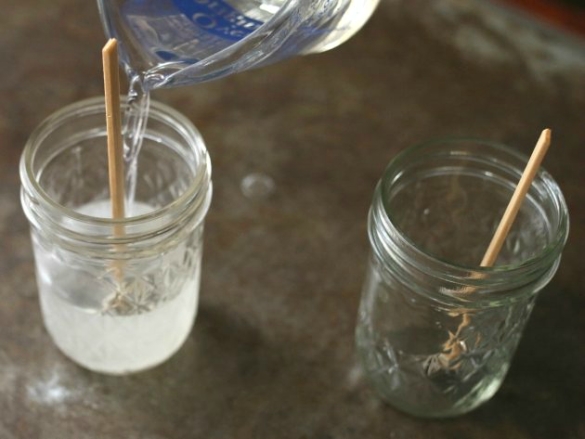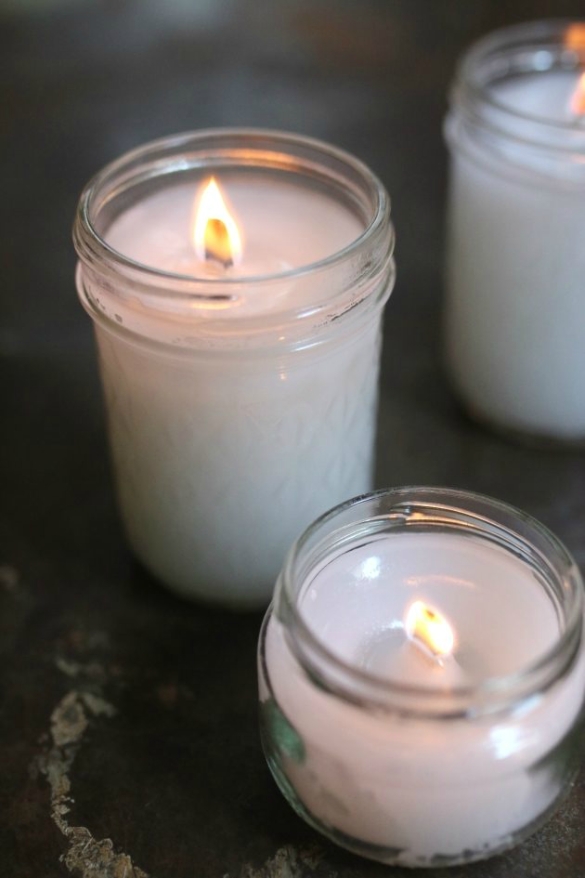In one of our recent project collaborations with eHow, we tackled uncovering the mystery behind how to make wooden wicks for candles...
For those unfamiliar, wood wicks have become a natural alternative to traditional candle wicks and emit a slight crackling campfire sound when lit. They're visually interesting, easy to light and are known for their natural burning quality.
When setting out to research how to make wooden candle wicks, we found several tutorials for making candles that use wooden wicks, but absolutely no information on what goes into the wick making process itself. We'd read several forums where pre-fabricated wicks often list the wood type and as having been treated with a "natural burning agent," though no further details on what that burning agent might be. Similarly, others who've tried to make the wicks at home have had difficulty with the wicks staying lit or the ability to re-light them after the initial burn. Curious, right?
So! Wooden wicks seemed to be quite the mystery, and we love a good DIY challenge. We'd picked up a few sets of balsa wood sticks from our local craft store to experiment with (they are long and lightweight, easy to cut and super budget-friendly). When brainstorming the different options we might be able to test treating the wood in a way that would supplement the burning process, we thought back to one of our all-time favorite winter projects — making natural candles with clementine peels and olive oil. The olive oil worked as a completely natural burning agent when paired with the fruit peel, so we immediately figured it might also be the key to a successfully burning wood candle wick:
After soaking the balsa wood sticks in olive oil, we tested them in newly poured candles, which turned out to be yet another use for our never-ending collection of glass jelly jars, ha! #masonjarproblems
After the freshly poured candles had fully cured, we lit up the wicks and crossed our fingers. When they lit straight away, then stayed lit for hours, and then re-lit after burning with no issue at all, we couldn't believe we'd cracked the proverbial code on "making wood wicks." That's right, a little olive oil soak turned out to be the secret "natural burning agent" treatment that worked for us.
Head on over to eHow to find our full tutorial with step-by-step instructions for making wooden candle wicks and the full process for pouring candles of your own!
Discover More:





How long did you soak the balsa wood in the olive oil?
ReplyDelete^^ Click on their ehow link after the last photo for the full tutorial :)
ReplyDeleteThis comment has been removed by the author.
ReplyDeleteI followed your instructions (thank you!) but my candle doesn't crackle like the "WoodWick" candles I've purchased. Any ideas?
ReplyDeleteI did exactly this and it will Not stay lit
ReplyDeleteCouple of additional insights from my own trial and error with wood wicks. Dual wood wicks work well for wine bottle candles. Olive oil is great but less expensive oil, wesson etc works just as well. I use the basswood hobby sticks instead of balsa - burns better and slower and easy to work with. Glue in wick clips to ensure they don't float later. Will crackle but not as much as commercial wooden wicks - is there a cracking agent :0
ReplyDeleteI just did the same, i bought balsa, soaked in olive oil, but this wick disappears with seconds, doesnt work at all.
ReplyDeletehave you found that these wicks work with soy candles and beeswax differently? I am interested in making beeswax candles in containers with the wooden wicks but beeswax can be tricky.
ReplyDeleteMy daughter made a candle using the cedar shingles we removed from a building and beeswax. She just cut the wick to size and poured in the melted beeswax. She had trouble at first with it staying lit, but that was due to not letting the candle cure long enough and no she did not soak in oil.
ReplyDeleteI did this a few times and it did not work. I soaked it in olive oil for a few minutes, I tried it soaking overnight, I tried it without soaking - there's clearly something you are not telling us. Either you are using a different wood than you say or you soaked it in something else... I don't know. But this certainly does not work. Perhaps I will try basswood as a commenter above suggested. Another thing I will try that I've seen online is soaking it in melted wax.
ReplyDeleteI haven't made any candles yet, just in the curious stage but maybe a popsicle stick could work. Right size, made of Baltic balsa wood.
ReplyDeleteSoak in vegetable oil overnight as the vegetable oil is a soybean derivative and try using pine craft sticks won't crackle but should burn ok
ReplyDeletewe use large popsicle sticks soaked in olive oil.Works great!
ReplyDeleteCan bamboo be used instead? I have tonnes of it growing in the garden. I am trying it out but wondering if anyone else has already experimented. Am using olive oil to soak. Wondering if the boric acid solution I have already made for butchers string wicks would also help?
ReplyDeleteive done this as directed, mine work fine. bought wood strips at hobby lobby, soaked in olive oil for couple hours or till next day . i didnt get the clips for bottom, but rather poured the candle and set my wick in, held it until wax set up. then let candle set until next day. ive made a few this way and no issues, other than one candle smells like campfire instead of candle scent i wanted lol. but i think because did not let wood wick dry or didnt dry it enough before using in the candle. i would make sure wood is really soaked well.pleant of time given. dried well. and give candle a few hours or day to cure. then light it see how it does. if u have too much oil whether from what wick soaked in, or added to the candle wax,eo fragrance, it can cuase problems lighting or staying lit. make sure wax is blended well with any additives, and wicks are wiped down well prior to cure and light.
ReplyDelete